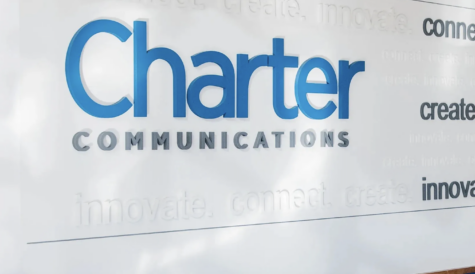Q&A: Simon Trudelle, NAGRA
 Simon Trudelle, senior director, product marketing, NAGRA, talks about super-aggregation, sports OTT services, advances in content protection and the importance of leveraging data.
Simon Trudelle, senior director, product marketing, NAGRA, talks about super-aggregation, sports OTT services, advances in content protection and the importance of leveraging data.
What are the key ingredients in today’s converged pay-TV and OTT era for pay-TV operators to deliver compelling consumer propositions?
Providers intent on creating a compelling consumer proposition must focus on one key ingredient – super-aggregation.
As super-aggregators, they must become the central gateway to all the content consumers love on any screen – not just OTT but linear broadcast and live sports, too. They will need to also consider their audience acquisition approach which in turn drives the platforms they will support.
In delivering this extended audience reach, it’s important to also consider a common UX across all platforms. So when consumers change platforms, the environment is instantly recognizable, with their personalised content displayed identically on each platform once signed in.
We’re entering the era of active content monetisation. Providers will have to rely on a smart combination of data analytics and curation to not just constantly monitor and tune the catalogue, but also to actively track and promote content.
You recently released a report on the state of the sports OTT market as part of the 2019 Pay-TV Innovation Forum programme. What is the impact on the growth of sports OTT services on the pay-TV industry?
More than a third of the top 25 football clubs now offer premium direct-to-consumer OTT services.
And while sports have historically been a key driver of growth in pay-TV, the advent of these OTT sports services means we could potentially see reduced demand for pay-TV as a result.
It’s critical for pay-TV companies to retain tier-one sports rights and augment the multiscreen experience they deliver. And pay-TV companies are potentially well-placed to retain these rights – especially if you consider multi-play operators’ ability to cross-subsidise sports from high-margin broadband businesses and their existing billing relationships.
How important is digital business transformation for pay-TV providers and what are the biggest organisational or operational challenges facing pay-TV businesses as they seek to transform?
Pay-TV service providers find themselves at a pivotal time where the lines between pay-TV and OTT are increasingly blurred. And more than ever, they face the challenge of proactively embracing “true digital transformation” in order to anticipate the rapidly changing market conditions.
But in terms of specific challenges, providers have to embrace client horizontalisation, service virtualisation and a data-driven methodology to define and evolve their consumer propositions – all while claiming their super-aggregator role and ensuring continuous solution renewal.
That’s a tall order, but it’s vital. Operators have to make multi-platform acquisition frictionless and adopt an increasing number of cloud-based technologies to reduce overall cost and time to market.
NAGRA has been a market leader in content protection for the last 25 years. What do you see as the “next big thing” in content protection?
The next big thing is simply thinking beyond just content protection, to scalable service protection. This means taking a holistic approach to service protection – one that scales on the backend across multiple networks, devices and applications.
The other aspect of scalability is to naturally span all device ecosystems with an adaptive security approach. That way, we can leverage the security infrastructure of any client device, from smartphones to set-top boxes to Smart TVs.
Thinking further ahead, scalable service protection will also allow us to naturally extend content protection to extra business propositions, like Smart Home devices and network security.
What are the most effective anti-piracy strategies and approaches?
We’ve anticipated the shift to online piracy, developing a comprehensive line-up of technologies and service. What makes them effective is their ability to stop commercial piracy by marking content at the source, providing real-time delisting, taking down pirate cloud infrastructure and blocking pirate traffic at the residential ISP level where possible.
And at infrastructure level, we provide scalable monitoring and take-down services that, combined with our intelligence on pirate services, allow us to disrupt illicit streaming services and measure the impact.
Of course, no single method will magically take down piracy – the most effective strategy is to utilise all of these technologies and best practices, alongside cross-industry and legislative collaboration to tackle piracy at its source and protect content end-to-end.
How can incumbent pay-TV operators leverage data to compete with emerging platforms?
Pay-TV operators have long been sitting on a wealth of under-utilised consumer and behavioural data. Thankfully, most of them are all set to catch up now.
With actionable business intelligence designed by pay-TV experts for pay-TV experts, providers can keep and grow their customer base, all while continuously optimising their content catalogue and marketing campaigns to increase revenues and margins.
We’re entering the era of super-aggregation and active content monetisation. Incumbent pay-TV operators must harness a smart combination of data analytics and curation. With this, they can then monitor, update and promote content in line with what consumers want.
This is sponsored content



